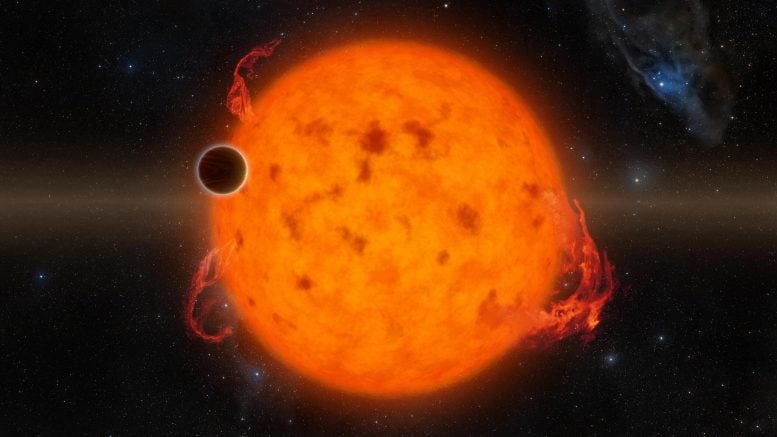
K2-33b, shown in this illustration, is one of the youngest exoplanets detected to date using NASA Kepler Space Telescope. It makes a complete orbit around its star in about five days. These two characteristics combined provide exciting new directions for planet-formation theories. K2-33b could have formed on a farther out orbit and quickly migrated inward. Alternatively, it could have formed in situ, or in place. Credit: NASA/JPL-Caltech
- Exoplanets are planets that orbit stars outside the Solar System
- Some exoplanets are thought to have liquid water on their surface and therefore the potential to host life — these exoplanets lay in the ‘habitable zones’ of stars
- A researcher at NYU Abu Dhabi has discovered that exoplanets lacking sufficient shielding can be impacted by high radiation bursts from the star, known as ‘flares’
The discovery of terrestrial exoplanets, planets that orbit stars outside the solar system, has been one of the most significant developments in modern astronomy. Several exoplanets lie in the “habitable zones” of stars, where planets are thought to be able to maintain liquid water on their surface, and have the potential to host life. However, an exoplanet that is too close to its host star is highly sensitive to radiation bursts from the star, also known as flares.
In this new study, NYUAD Center for Space Science Research Scientist Dimitra Atri found that not all exoplanets in habitable zones will be able to maintain hospitable conditions for life. Exoplanets in close proximity to stars are subject to radiation bursts which can disrupt habitable conditions unless the exoplanet has significant atmospheric or magnetic shielding.
In the study, published in the journal Monthly Notices of the Royal Astronomical Society: Letters, Atri explores how flares from stars affect a planet’s surface radiation dose, and if that can disrupt the planet’s ability to host life. The role of a planet’s magnetic field strength and its atmosphere in providing shielding from these bursts was also examined. The factors measured include flare strength and spectrum, as well as the planetary atmospheric density and magnetic field strength. To calculate the surface radiation dose, particle spectra from 70 major flare emitting events (observed between 1956 and 2012) were used as proxy, and the GEANT4 Monte Carlo model was used to simulate flare interaction with exoplanetary atmospheres.
From this study it was concluded that flares can abruptly increase the radiation level on planetary surfaces and have the capability to disrupt potentially habitable conditions on planets. It was also found that the atmospheric depth (column density) and planetary magnetic field are major factors in protecting planets from flares and maintaining a substantial planetary atmosphere.
“As we continue to explore the planets of the solar system and beyond, discovering if these planets have the ability to support life continues to be of immense importance,” said Atri. “More progress in this area will improve our understanding of the relationship between extreme solar events, radiation dose, and planetary habitability.”
Reference: ” Stellar proton event-induced surface radiation dose as a constraint on the habitability of terrestrial exoplanets” by Dimitra Atri, 4 November 2019, Monthly Notices of the Royal Astronomical Society: Letters.
DOI: 10.1093/mnrasl/slz166

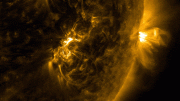
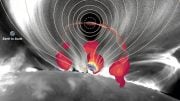
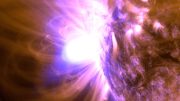

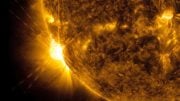

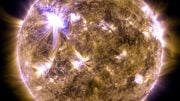

Be the first to comment on "Extreme Solar Events and the Search for Habitable Exoplanets"